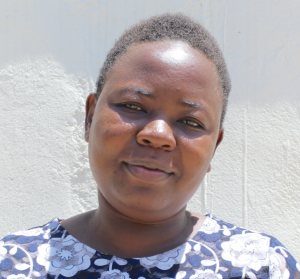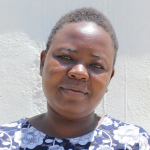The 280 people of Chiliva combined their resources together to have their spring protected by a contractor in the 1990s. Initially, the protection worked well. But over time, things have begun to fall apart, and more and more people are getting sick from drinking the water.
The spring construction is no longer functioning as it should on a few different levels. The first and most important sign that something has gone awry is the community members' poor health. But the spring box, the area behind the discharge pipe that filters the water, has become compacted, so the once-carefully-placed layers of clay, rock, and soil can no longer catch the contaminants that harm people.

This may also be causing another visible problem: the spring's water is finding ways around the construction, suggesting either that the protection is no longer sufficient for the amount of water produced by the spring, or that the water can't go where it usually would.
Community members must now boil the water before anyone drinks it, but practically, this isn't always possible for our interviewee, 53-year-old Violet Amekove.

"Personally, I have really tried not to take (drink) this water before treatment, but the challenge is controlling the young ones," Violet said. "Most of the time, you will hear them complaining about headaches and stomach upsets. Two months ago, I visited the hospital several times because my granddaughter was unwell."

The water crisis in Chiliva also disrupts community members' schedules, especially in the dry season. The amount of water in the spring decreases when there's no rain, which means it takes longer to fill up a container with water.

The lines of people at the spring are especially disruptive for schoolgoing kids like 14-year-old Derick (pictured above). "During [the] dry season, we are asked to carry water to school, and our spring is located on the way to school. Most of the time, I will [be] late because community members are always at the spring at six a.m., and you need to queue up, and this has been my greatest challenge."
A better-protected spring will not only help community members improve their health, but it will also allow their schedules to regain a level of normalcy. With more time and energy, who knows what the people of Chiliva could do?
What We Can Do:
Spring Protection
Protecting the spring will help provide access to cleaner and safer water and reduce the time people have to spend to fetch it. Construction will keep surface runoff and other contaminants out of the water. With the community’s high involvement in the process, there should be a good sense of responsibility and ownership for the new clean water source.
Fetching water is a task predominantly carried out by women and young girls. Protecting the spring and offering training and support will, therefore, help empower the female members of the community by freeing up more of their time and energy to engage and invest in income-generating activities and their education.
Training on Health, Hygiene and More
To hold training, we work closely with both community leaders and the local government. We ask community leaders to invite a select yet representative group of people to attend training who will then act as ambassadors to the rest of the community to share what they learn.
The training will focus on improved hygiene, health, and sanitation habits in this community. With the community’s input, we will identify key leverage points where they can alter their practices at the personal, household, and community levels to affect change. This training will help to ensure participants have the knowledge they need about healthy practices and their importance to make the most of their water point as soon as water is flowing.
Our team of facilitators will use a variety of methods to train community members. Some of these methods include participatory hygiene and sanitation transformation, asset-based community development, group discussions, handouts, and demonstrations at the spring.
One of the most important issues we plan to cover is the handling, storage, and treatment of water. Having a clean water source will be extremely helpful, but it is useless if water gets contaminated by the time it is consumed. We and the community strongly believe that all of these components will work together to improve living standards here, which will help to unlock the potential for these community members to live better, healthier lives.
We will then conduct a small series of follow-up trainings before transitioning to our regularly scheduled support visits throughout the year.
Training will result in the formation of a water user committee, elected by their peers, that will oversee the operations and maintenance of the spring. The committee will enforce proper behavior around the spring and delegate tasks that will help preserve the site, such as building a fence and digging proper drainage channels. The fence will keep out destructive animals and unwanted waste, and the drainage will keep the area’s mosquito population at a minimum.





 Protected Spring
Protected Spring
 Rehabilitation Project
Rehabilitation Project






























